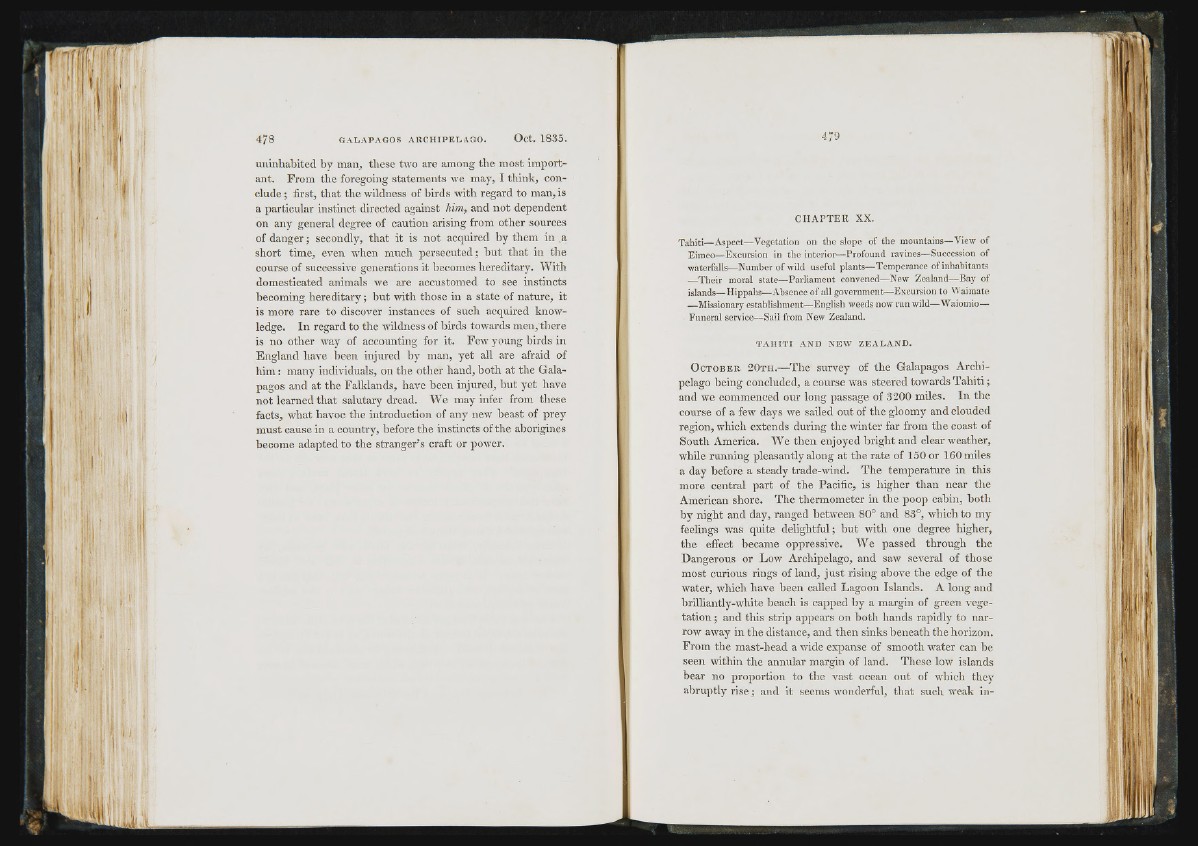
n . ■
! li !
| ; í j ! í '
uninhabited by man, tliese two are among the most important.
From the foregoing statements we may, I think, conclude
; first, that the wildness of birds with regard to man, is
a particular instinct directed against him, and not dependent
on any general degree of caution arising from other sources
of danger ; secondly, that it is not acquired by them in a
short time, even when much persecuted; hut that in the
course of successive generations it becomes hereditary. With
domesticated animals we are accustomed to see instincts
becoming hereditary ; but with those in a state of nature, it
is more rare to discover instances of such acquired knowledge.
In regard to the wildness of birds towards men, there
is no other way of accounting for it. Few young birds in
England have been injured hy man, yet all are afraid of
him : many individuals, on the other hand, both at the Galapagos
and at the Falklands, have been injured, but yet have
not learned that salutary dread. We may infer from these
facts, what havoc the introduction of any new beast of prey
must cause in a country, before the instincts of the aborigines
become adapted to the stranger’s craft or power.
C H A P T E R X X .
T a h i ti— A s p e c t— V e g e ta tio n o n th e s lo p e o f th e m o u n ta in s— V iew o f
E im e o— E x c u r s io n in th e in te r io r— P ro fo u n d r av in e s— S u c c e ssio n o f
w a te rfa lls— N um b e r o f w ild u se fu l p la n ts— T em p e r a n c e o f in h a b ita n ts
— T h e i r m o ra l s ta te— P a r liam e n t c o n v e n ed— K ew Z e a la n d— B a y o f
isla n d s— H ip p a h s— A b s e n c e o f a ll g o v e rnm e n t— E x c u r s io n to W a im a te
— M is s io n ary e s ta b lis hm e n t— E n g lis h we ed s n ow r u n w ild— W a iom io—
F u n e r a l se rv ic e— S a il from N ew Z e a la n d .
T A H I T I A N D N E W Z E A L A N D .
O c t o b e r 2 0 t i i .—The survey of the Galapagos Archipelago
being concluded, a course was steered towards Tahiti ;
and we commenced our long passage of 3200 miles. In the
course of a few days we sailed out of the gloomy and clouded
region, which extends during the winter far from the coast of
South America. We then enjoyed bright and clear weather,
while running pleasantly along at the rate of 150 or 160 miles
a day before a steady trade-wind. The temperature in this
more central part of the Pacific, is higher than near the
American shore. The thermometer in the poop cabin, both
by night and day, ranged between 80° and 83°, which to my
feelings was quite delightful; but with one degree higher,
the effect became oppressive. We passed through the
Dangerous or Low Archipelago, and saw several of those
most curious rings of land, just rising above the edge of the
water, which have been caUed Lagoon Islands. A long and
brilliantly-white beach is capped by a margin of green vegetation
; and this strip appears on both hands rapidly to narrow
away in the distance, and then sinks beneath the horizon.
From the mast-head a wide expanse of smooth water can be
seen within the annular margin of land. These low islands
bear no proportion to the vast ocean out of which they
abruptly rise ; and it seems wonderful, that such weak in